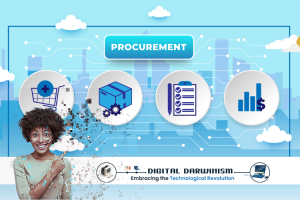“The information was correct, but the interpretations were not…” I was sincere in everything I said, even just before the fall of Baghdad international airport.” Famous last words from the Iraqi information minister. But how about providing accurate, actionable information from your procurement information systems….
Or as some would say procurement miss-information systems.
Organisations know very well that vital information for decision-making is lying in its databases. Mountains of procurement data is getting accumulated in various databases scattered around the enterprise. But the key to gaining competitive advantage lies in deriving insight and intelligence out of this data.
Is there a conspiracy afloat to stop Procurement from accessing this information? This might be the case in some companies, but usually the answer has to do with the infernal IT implementation. Here are some of the reasons why you cannot get the information because of decisions taken at the time of implementation.
– ERP software was installed to mirror a set of existing, inadequate business processes. At the time, the organisations was ill prepared to adopt best business practice principles delivered as part of the ERP software.
– Management did not answer the question, “How do we want to run our business and why?” and therefore, maximizing performance through significant business process improvement did not occur.
– Executive sponsorship and active, on-going involvement with the ERP implementation were lacking and, as a result, lots of political bickering and barriers to success surfaced and ultimately became more and more difficult to overcome.
– In the critical stages of the enterprise reporting initiative, managers and stakeholders did not focus on the basics that were required. This resulted in a set of predefined operational reports delivered that is usually part of the ERP system.
Ok, so now we know what caused the problem, how can it be fixed?
A new breed of Procurement information service has recently become available that transforms raw procurement data into insights and intelligence which helps management to identify key trends. Using interesting new technologies coupled with hundreds of pre-defined procurement reports, these service providers help procurement foresee predictable events and act in anticipation of those events.
They also help management to get a holistic view of procurement within the enterprise.
This allows companies to develop a good systemic understanding of events, thus allowing focused reactions to those events, such as redefining and reengineering business processes.
The type of reporting that has now become available cab be classified in three areas:
Operational Reports:
Operational reports directly support the ongoing operation of a system. They collect transactional data in order to enhance operational efficiencies. This reporting category includes transaction-level reports on matters such as manufacturing production, orders entered, billings, inventories, technical problems and transportation logistics. These reports are used by people with responsibility for improving operations. They provide task-oriented line-item information on individual transactions at the very granular level of detail required for operational management.
Tactical Reports:
Tactical reports are intended for monitoring and responding quickly to a variety of short-term situations. Such reports may need to combine data from multiple operational systems or store attributes that are not resident in the operational system because they are not required for operational processing.
Strategic Reports:
Strategic reports may measure the same entities as tactical reports; but they may also deal with more strategic financial, sales and productivity data and stretch the analysis over longer periods of time.
Strategic reports compare measures like these over lengthy time periods such as:
• Month-to-date or month-end for the current month versus previous months, projections for future months.
• Year-to-date or year-end for the current year versus previous years, projections for future years.
In addition to the above-mentioned categories, selected reports are grouped to automatically produce a management reporting pack that can be utilised for recurrent operational and management meetings. The logical hierarchical grouping of these reports forms the basis of a procurement-balanced scorecard, which assists managers at all levels to monitor results in their key areas.
This set of reports can be deployed on any ERP systems within a very short implementation timeframe capitalising on existing IT investments.
On local company that has developed such as service and is now assisting local and international companies in unleashing the power of their procurement information is Cutting Edge Procurement. .
Apparently it has now become possible to access and interpret procurement data across many different ERP implementation and get a common and cohesive view of teh entire procurement spend.
Pity the information minster didn’t have such a thing.


























